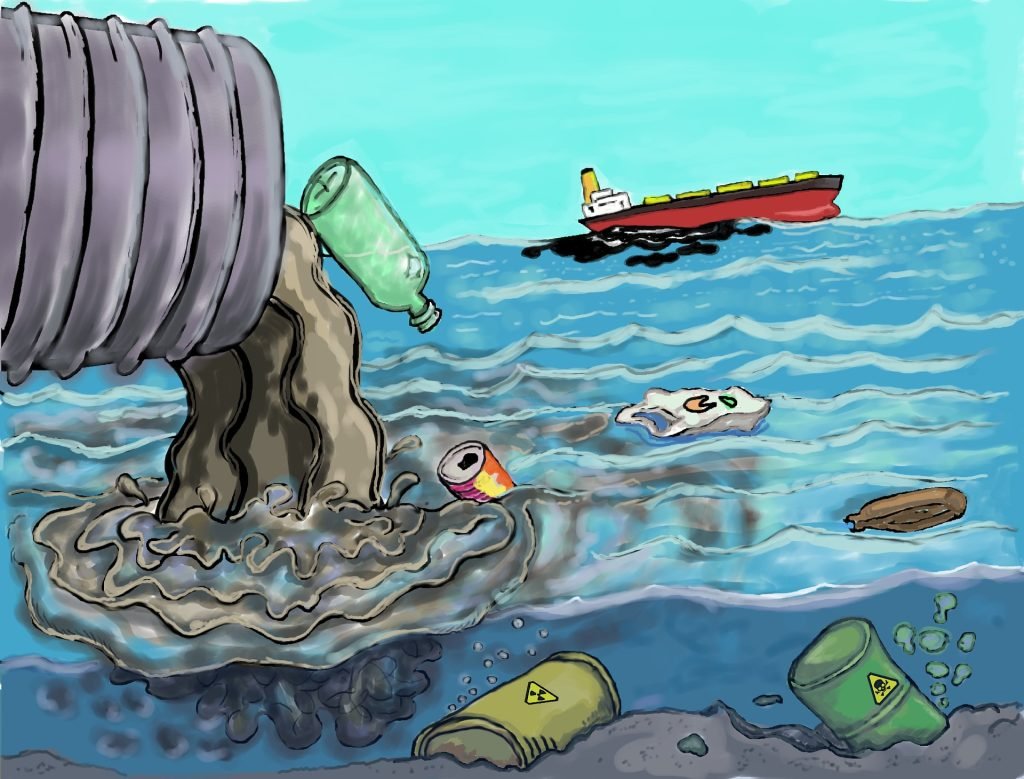Here Is A Comprehensive Guide to sustainable living
Sustainable living has become an increasingly important topic in recent years, as people around the world are recognizing the urgent need to protect the environment and promote a more sustainable future.
By adopting sustainable practices (has been discussed here) in our daily lives, we can help reduce our impact on the planet and build a greener, more sustainable future for generations to come.
In this comprehensive guide, we will explore what sustainable living is, why it matters, and how you can incorporate sustainable practices into your daily life.
From green energy and renewable energy sources to eco-friendly products and zero-waste living, we will cover a range of topics that can help you reduce your carbon footprint and make a positive impact on the environment.
Whether you are a seasoned sustainability advocate or just getting started on your sustainability journey, this guide will provide you with the knowledge and tools you need to build a greener future.
So let’s dive in and explore the world of sustainable living together!

1: Understanding Sustainable Living
Sustainable living refers to a lifestyle that seeks to reduce one’s impact on the environment by incorporating practices that are environmentally friendly, socially responsible, and economically viable.
The ultimate goal of sustainable living is to meet the needs of the present without compromising the ability of future generations to meet their own needs.
One of the primary benefits of sustainable living is that it helps to conserve natural resources, such as water, energy, and land.
For example, by reducing our energy consumption through the use of energy-efficient appliances and renewable energy sources like solar power, we can help reduce our dependence on non-renewable resources like fossil fuels.
This, in turn, can help reduce greenhouse gas emissions and slow the pace of climate change.
Sustainable living also has important social benefits.
By promoting fair trade, for example, we can support sustainable development in developing countries and help reduce poverty.
Additionally, sustainable practices like organic farming can help improve soil health and reduce the use of harmful pesticides and herbicides, which can have negative impacts on human health.
On the other hand, unsustainable practices can have a negative impact on the environment and society.
For example, the overuse of non-renewable resources like oil and gas can contribute to air and water pollution, climate change, and other environmental problems.
Unsustainable practices can also have negative social impacts.
This iclude exploitation of workers in developing countries or depletion of natural resources that are important for the livelihoods of indigenous communities.
Given the growing concerns about the impacts of unsustainable practices on the environment and society, it is important for individuals to prioritize sustainable living in their daily lives.
By adopting sustainable practices, individuals can help reduce their impact on the environment and promote a more sustainable future.
This can include practices like reducing water usage, eating a plant-based diet, using public transportation or walking instead of driving, and using energy-efficient appliances.
Moreover, sustainable living has a positive impact on an individual’s own health and well-being.
For instance, eating locally-sourced, organic foods reduces the consumption of harmful chemicals that could affect our health.
Thus, by prioritizing sustainable living, individuals can contribute positively to society, the economy, and their personal well-being.
2: The Role of Green Energy and Renewable Energy in Sustainable Living
Green energy and renewable energy are two terms that are often used interchangeably.
Green energy refers to the energy that is produced using natural, renewable resources like wind, solar, hydro, and geothermal power.
Renewable energy, on the other hand, refers to the energy that is derived from sources that are replenished naturally and can be sustained over time.
The benefits of green energy and renewable energy for the environment are numerous.
First, they help to reduce greenhouse gas emissions, which are a major contributor to climate change.
Second, they help to conserve natural resources like coal and oil, which are non-renewable and will eventually run out.
Third, they reduce our dependence on foreign sources of energy, which can have significant economic and national security implications.
There are several examples of green and renewable energy sources that individuals can incorporate into their daily lives.
Solar power is one of the most popular sources of renewable energy, and it can be used to power homes and businesses.
Individuals can install solar panels on their roofs or purchase solar-powered products like phone chargers or outdoor lights.
Wind power is another popular source of renewable energy.
Wind turbines can be installed on land or offshore and can provide electricity to homes and businesses.
Individuals can also purchase wind-powered products like small wind turbines for their homes or wind-powered phone chargers.
Hydroelectric power is another source of renewable energy that can be used to generate electricity. Hydroelectric dams can be built on rivers and can provide electricity to homes and businesses.
Geothermal power is also a source of renewable energy that uses heat from the earth’s core to generate electricity.
Incorporating green and renewable energy sources into our daily lives can help us reduce our carbon footprint and promote sustainable living.
We can do this by installing solar panels or wind turbines in our homes, purchasing energy-efficient appliances, using public transportation or electric vehicles.
Moreover, we can support businesses that use renewable energy sources.
By making these small changes, we can make a big difference in promoting a more sustainable future.
3: Eco-Friendly Products and Zero Waste Living
Eco-friendly products are products that are designed to have minimal impact on the environment throughout their entire life cycle, from production to disposal.
They are made using sustainable materials and manufacturing processes and are often recyclable or biodegradable.
Zero-waste living, on the other hand, is a lifestyle that focuses on producing as little waste as possible.
It involves reducing consumption, reusing and repurposing items, and recycling or composting what cannot be avoided.
There are several benefits to using eco-friendly products and reducing waste.
First, it helps to reduce the amount of waste that ends up in landfills and the environment.
Second, it conserves natural resources like water and energy, as eco-friendly products often require less of these resources to produce.
Third, it helps to reduce greenhouse gas emissions by reducing the need for new products to be manufactured and transported.
Individuals can adopt zero-waste living by following a few simple tips.
First, they can reduce their consumption of single-use products like plastic bags, straws, and water bottles.
Second, they can choose products made from sustainable materials like bamboo or recycled plastic.
Third, they can repurpose or reuse items that would otherwise be thrown away.
Finally, they can recycle or compost what cannot be avoided.
Reducing waste and using eco-friendly products can also have a significant impact on an individual’s carbon footprint.
For example, according to the Environmental Protection Agency, recycling one ton of aluminium cans saves the equivalent of 1,665 gallons of gasoline in greenhouse gas emissions.
Additionally, using energy-efficient appliances and reducing water usage can also significantly reduce an individual’s carbon footprint.
In summary, eco-friendly products and zero-waste living are important components of sustainable living.
By reducing waste and using sustainable products, individuals can have a positive impact on the environment and reduce their carbon footprint.
4: Climate Change and Carbon Footprint Reduction
Climate change refers to the long-term changes in global temperatures and weather patterns caused by the increasing concentration of greenhouse gases in the atmosphere.
These changes can have significant impacts on the environment and society, including rising sea levels, more frequent and severe weather events, and negative impacts on ecosystems and wildlife.
Individual actions can contribute to climate change in several ways.
For example, the use of fossil fuels for transportation and energy production releases large amounts of greenhouse gases like carbon dioxide into the atmosphere.
Additionally, the consumption of meat and dairy products can also contribute to greenhouse gas emissions, as livestock production generates significant amounts of methane.
However, there are several ways in which individuals can reduce their carbon footprint and help mitigate climate change.
First, they can reduce their reliance on fossil fuels by using public transportation, biking, or walking instead of driving.
They can also switch to renewable energy sources like solar or wind power for their homes or businesses.
Second, individuals can reduce their consumption of meat and dairy products, which can have a significant impact on their carbon footprint.
For example, a study by the University of Oxford found that following a vegan diet could reduce an individual’s carbon footprint by up to 73%.
Finally, individuals can reduce their overall consumption and waste, as this can also contribute to greenhouse gas emissions.
This can be achieved through practices like buying locally-produced food, reducing energy use, and choosing products made from sustainable materials.
Climate change is a significant global issue that requires action from individuals to reduce their carbon footprint and mitigate its impacts.
By adopting sustainable practices and reducing consumption, individuals can make a positive impact on the environment and help address this pressing issue.
Conclusion
In summary, this article has highlighted the importance of sustainable living for individuals and the planet.
The article discussed the definition and benefits of sustainable living, as well as the impact of unsustainable practices on the environment and society.
The role of green and renewable energy sources in sustainable living was also discussed, along with the benefits and examples of such energy sources.
The article also emphasized the importance of using eco-friendly products and adopting a zero-waste lifestyle to reduce waste and environmental impact.
Finally, the article discussed the pressing issue of climate change and the importance of reducing carbon footprints through individual actions.
These incude reducing reliance on fossil fuels, choosing sustainable materials, and reducing overall consumption and waste.
Sustainable living is critical for the long-term health of our planet and society.
By making sustainable choices in our daily lives, we can reduce our impact on the environment and contribute to a more sustainable future for ourselves and future generations.
It is important for individuals to take responsibility and prioritize sustainable living to ensure a sustainable future for all.
Here are some reputable websites that offer comprehensive guides and information on sustainable living:
- The Environmental Protection Agency’s (EPA) website has a section dedicated to sustainable living with information on topics such as reducing your environmental impact, energy efficiency, and sustainable transportation: https://www.epa.gov/sustainability
- The United Nations Environment Programme (UNEP) website offers a range of resources on sustainable living, including tips on green lifestyles, sustainable consumption, and circular economy practices: https://www.unep.org/interactive/sustainable-lifestyles
- The National Geographic’s “Green Living” section has a comprehensive guide to sustainable living with tips on how to reduce your carbon footprint, adopt eco-friendly practices, and create a more sustainable lifestyle: https://www.nationalgeographic.com/environment/green-living/
- The World Wildlife Fund (WWF) website offers a range of resources on sustainable living, including tips on reducing waste, choosing sustainable products, and conserving energy: https://www.worldwildlife.org/pages/live-green
- The Sustainable Development Goals (SDGs) Knowledge Platform is a comprehensive resource for information on sustainable living, covering topics such as clean energy, sustainable cities, and responsible consumption and production: https://sustainabledevelopment.un.org/topics/sustainableconsumptionproduction
These websites offer a wealth of information and resources on sustainable living, and can be great references to use in your sustainable living practices.


